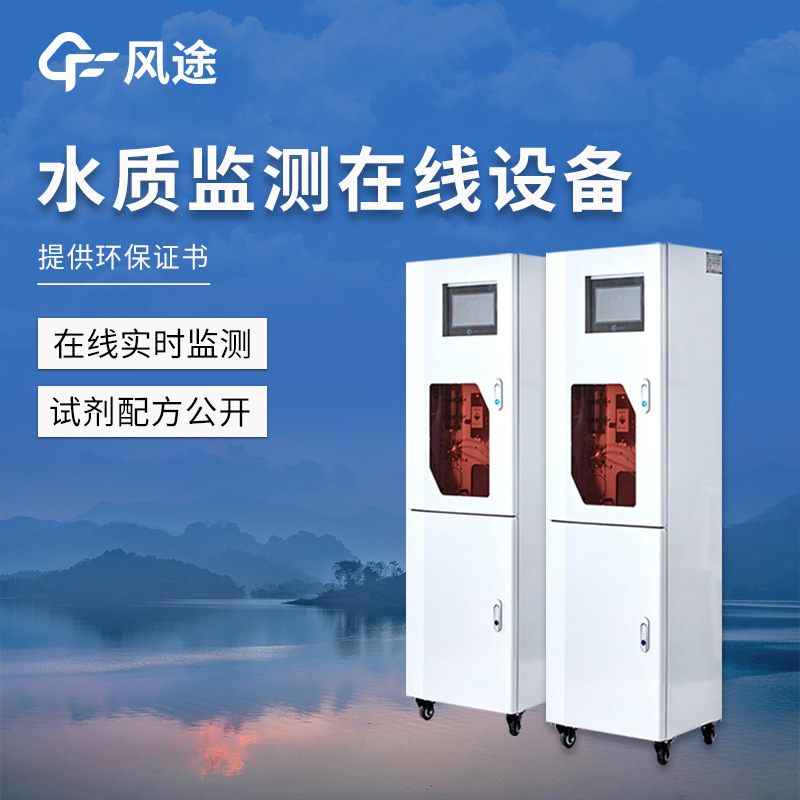Shandong Fengtu IOT Technology Co., Ltd
Sales Manager:Ms. Emily Wang
Cel,Whatsapp,Wechat:+86 15898932201
Email:info@fengtutec.com
Add:No. 155 Optoelectronic Industry Accelerator, Gaoxin District, Weifang, Shandong, China

Sales Manager:Ms. Emily Wang
Cel,Whatsapp,Wechat:+86 15898932201
Email:info@fengtutec.com
Add:No. 155 Optoelectronic Industry Accelerator, Gaoxin District, Weifang, Shandong, China
time:2025-05-13 09:20:32 source:Weather Station viewed:302 time
In modern society, water quality monitoring plays a vital role in ensuring the safety of domestic water supply and maintaining the stability of the ecological environment. So, how exactly is water quality monitored?
Water quality monitoring requires the determination of multiple key indicators. For example, a thermometer and a pH meter are used to measure the water temperature and pH value, because the water temperature and pH value can affect the content of substances in water and chemical reactions. A dissolved oxygen meter is used to measure the dissolved oxygen content, and its value reflects the freshness of water, which is affected by factors such as ambient temperature and light. The turbidity and color of water are determined. High turbidity and color may indicate poor water quality. Additionally, the contents of nutrients such as ammonia nitrogen and total phosphorus are detected. Excessive nutrients can lead to problems such as excessive algae growth. Moreover, the contents of pollutants such as organic matter, heavy metals, and bacteria in water are measured, which are directly related to human health and environmental quality.
There is a wide variety of instruments used for water quality monitoring. Portable water quality analyzers have the advantages of being small, portable, and easy to operate. They are suitable for field and on-site monitoring and can quickly determine multiple water quality indicators, such as pH value, dissolved oxygen, turbidity, etc. Laboratory water quality monitoring instruments have high precision and powerful functions. Instruments like atomic absorption spectrophotometers, gas chromatographs, and liquid chromatographs can conduct in-depth analysis of water quality and determine the content of trace and ultratrace substances. However, they are generally large in size and expensive, and need to be used in professional laboratory environments. Online water quality monitoring instruments can monitor water quality in real-time and continuously. They are commonly used in places such as water plants, sewage treatment plants, and industrial parks. They can promptly detect changes in water quality and issue alarms. Commonly monitored parameters include pH, electrical conductivity, turbidity, flow rate, etc.
The Smart Water Quality Monitor is an integrated and automated water quality monitoring device, and the FT-QSZ04 Smart Water Quality Monitor is a representative of such devices. It integrates multiple monitoring instruments and systems into a cabinet structure. It usually includes water quality sensors, data collection and processing units, automatic control devices, data transmission modules, etc. It can simultaneously monitor multiple water quality parameters, such as pH value, dissolved oxygen, turbidity, residual chlorine, temperature, etc., with high monitoring precision and good data stability. The device has a high degree of automation and can automatically sample, analyze, and process data according to preset procedures, reducing the workload and errors of manual operation. It has the function of remote data transmission and can transmit the monitoring data to the monitoring center or management platform in real-time, making it convenient for relevant personnel to conduct remote monitoring and management. It can quickly respond to changes and abnormal situations in water quality. Moreover, the device has a compact structure and occupies a small area, making it suitable for installation and use in places with limited space, such as small water plants, sewage treatment plants, and river monitoring points.

chlorophyll sensor detected the fluorescence of chlorophyll and estimated the concentration of phytoplankton, which provides a high-performance measurement of chlorophyll A....
temperature and humidity monitoring Monitor the relative humidity and temperature of indoor or outdoor air to provide accurate data for various applications....
Weather station monitoring equipment manufacturer, is a high-tech enterprise specializing in the research, development, production and sales of weather instruments. As a weather station monitoring equipment manufacturer, Windway Technology has launched a variety of weather station monitoring equipme...
The Internet of Things in agriculture is playing an increasingly important role in modern agriculture, and one of its fundamental applications is soil moisture monitoring. By accurately obtaining real-time data on the growing environment, we are able to use technologies such as automated control and...